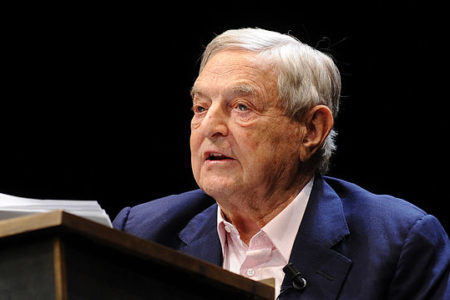
A couple weeks ago, a Christian friend and I did something some other Christians might find unusual: We spent an hour and a half mostly agreeing with an atheist.
My friend was Neil Shenvi, the atheist was James Lindsay, the context was Justin Brierley’s show Unbelievable? and the topic was the religious character of critical theory and identity politics. Some readers might recognize James’s name from the Sokal-squared sting he executed in collaboration with Peter Boghossian and Helen Pluckrose, exposing the academic farce that is grievance studies with a series of critically acclaimed (and completely fake) papers. James has been spending most of his life on Twitter ever since but graciously carved out some time to discuss his big thesis: Social justice is the new religion.
He unpacks this thesis together with co-author and filmmaker Mike Nayna in an essay at Areo here. This formed the focal point of our dialogue. Lindsay makes the case that critical theory has developed its own holy writ, moral code, rituals, rewards and punishments. As an atheist, he is alarmed. He thought the Enlightenment had killed religion dead—or at least, the large-scale embrace thereof by rational societies. But with the entrenchment of post-modernism in the universities, seven more demons have rushed into religion’s empty chapel, to establish something far worse.
During the show, Justin rolled a clip from Nayna’s Netflix-quality documentary on the fall of Evergreen State College. Evergreen was formerly home to evolutionary biology professors Bret Weinstein and his wife Heather Heying, before an anarchic mob of student grievance warriors set off a chain of events ending in their resignation and exile from the academy. Part 1 and Part 2 of the documentary are free to watch on YouTube. They are chilling, essential viewing for anyone who wants to understand the rot setting in from the top down at our institutions of higher learning. In the clip we listened to together, Weinstein tries to make his voice heard above the din, only to be drowned out by the self-consciously Jackson-esque chant “Hey hey, ho ho! Bret Weinstein’s got to go!”
Perhaps even more chilling are the quieter moments from meetings behind closed doors, where students and faculty one by one stand up to renounce their white privilege (and all its works). In one ritual, while a man bangs a drum, they line up as if to board a make-believe “canoe.” They are only “allowed” to board if they reaffirm their white guilt and their commitment to equity, whatever the means and whatever the cost.
Another moment that I can’t shake: In more shaky-cam footage of the Evergreen takeover itself, the white president of the college walks back and forth in front of a room overrun with young anarchists. When he gestures with his hands, voices call out saying he isn’t allowed to point while speaking. He meekly complies to uproarious laughter.
Lindsay himself appears in the documentary along with his Sokal-squared colleagues, interviewing Weinstein and Heying over coffee and pie. Weinstein recalls for them an especially surreal back-room exchange with other faculty and equity activists, where he asked for evidence that the campus was rife with white supremacy as claimed. He was told that to ask such a question was itself an act of white supremacy. He remembers straightening up in his chair and asking, “Are you talking to me?” His interlocutor locked eyes with him: “Yes.” Another said this was not the place for Weinstein to defend himself against accusations of white supremacy. “Fine,” he said. “Then where is that place?” Answer: “You do not get to ask for such a place.”
Neil and I had hopes for a four-way conversation that would have brought in Lindsay’s colleague Peter Boghossian as well. But Boghossian couldn’t spare the time. Understandably so, now that his own position at Portland University is in danger due to his role in Sokal-squared. The charges are blatantly trumped up. Nobody is fooled.
I wish we could have talked to Boghossian though, because his arc is instructive for the purposes of understanding our cultural moment. In the course of the show, Justin Brierley put his finger on the irony that as of a few years ago, Peter’s Manual for Creating Atheists was keeping the New Atheism candle burning, Dawkinsianly dismissing religious faith as a mental illness and offering practical tips for how rational people could take atheistic thinking to the streets. To be blunt, I found the book lacking in substance, more than a little distasteful, and more than a little disingenuous. I say that knowing Boghossian himself may come across this article, but I suspect after what he’s been subjected to this past year, he will scarcely notice the sting.
For today, Boghossian finds himself waging a different war, one in which he has discovered an unexpected alliance with Christians. Even vocal opponents of his “Street Epistemology” like Tim McGrew have offered their good wishes and encouragement. (McGrew and Boghossian debated on Unbelievable? in 2014). His Twitter followers include not just atheists, but names like biblical scholar Peter Williams, evangelical faith and culture writer Nancy Pearcey, and Catholic philosopher Francis Beckwith.
Something has shifted in the dialogue between atheists and people of faith. The more James and Neil and I talked, the more we felt it: In our brave new cultural landscape, this is no longer about faith versus no faith. It is about good faith versus bad faith.
We’re not the only ones. One summer recently, a friend of mine crossed professional paths with British journalist and “Intellectual Dark Web” thinker Douglas Murray. While religion-sympathetic in a cultural sense, Murray still takes some of his cues on how to think about religion from the New Atheists in whose circles he still moves. When visiting the states, he allows Matt Dillahunty to give him the run-down of “Christianity in America” and laughs along, assuming that Matt knows what he’s talking about. As a gay man, Murray has also vocally opposed the Christian view of marriage and sexuality, citing it as a key factor in his own de-conversion. Based on specs alone, it might appear to someone taking a shallow survey of our cultural moment that he might not have much to talk about with my friend, a devoutly conservative, biblically faithful Christian. But in fact, they got along swimmingly, because they were united on the same thing that unites me and Neil Shenvi with James Lindsay: the recognition of that common enemy which would make it impossible even to have open, reasoned disagreement.
As Christians, Neil and I would love to find commonality with other people who profess a commitment to Christ and His word. But increasingly, we have found ourselves drifting apart from other members of the Church—even wings of the Church that are considered more conservative than average. A crack has opened up, and it is widening by the day. It has been created by the substitute gospel of critical theory, encoded in the jargon of “social justice.” One day, we watch Mike Nayna’s documentation of Evergreen’s fall. The next, we open up key evangelical Twitter feeds and start reading. And we see that the same patterns are there, albeit more subtly manifested: the emotional manipulation; the loaded questions; the vision of the anointed.
“Was a wrong committed?” asks one prominent pastor recently, speaking about reparations. “Is it right to address the wrong?”
Or here, a Twitter discussion prompt about formative books prompts Beth Moore to say something is deeply, disturbingly wrong with a Christian whose bookshelf is insufficiently diverse. Another pastor joins in.
Or there was this music video for a worship song, shot with an all-white cast—the only ones who showed up for its open casting call. It triggered a Christian social media mob demanding abject apology. Writer Andrew Peterson gives it, but even this isn’t enough for some, who still demand he re-shoot the entire video.
Many more examples could be given, in many other contexts. Contexts where it is no longer possible to politely disagree and be on your way. Contexts where the slightest hint of a question about a confidently declared “solution” to a particular problem raises immediate suspicion that you must not care about the problem. You must be part of the problem. (For more of my thinking on this tyranny of empathy, see something I wrote shortly after the Kavanaugh drama—a case on which I take no position in the piece, but which provides a springboard for further reflection.)
People like Andrew Peterson are stumbling over tripwires: invisible booby traps that will bring you down while you thought you were just going about your life. Every day, it seems, there’s a new one. You thought you were safe, but you were wrong. You thought you were innocent, but you were wrong. You thought you knew the gospel, but you were wrong. Little did you know you were breaking a new set of commandments, written on a new set of stone tablets. Little did you know just how much of a sinner you were.
Can you wash out the damned spot? That depends. How long are you willing to grovel? How much guilt are you willing to admit? Put your hands up, and then we can talk. Or down. We’ll decide. We’re in charge now.
Some of the people laying down these new ground rules are our brothers and sisters in the faith. But we are forced to conclude, sorrowfully, that they are not in good faith.
We did, eventually, make our way to some points of disagreement with the details of James’s thesis. We shared the gospel, debated the strengths and weaknesses of secularism, and argued that the Christian religion can be rational. James himself generously conceded some of our points, particularly when we pointed to Christianity’s central message of redemption. Somehow, while they were founding their new religion, the diversity warriors left that part out. I wonder why.
We didn’t walk away from our conversation with all the same answers. But the point is that we had a conversation. We sought to understand each other. We sought to communicate in good faith. Such opportunities can no longer be taken for granted. Christians should seize them wherever they can still be found, even if our dialogue partners don’t look like we expect them to.
Reason has left the room. But those who are left should come and reason together.
The Christian and the atheist should be friends.
via Patheos






Recent Comments